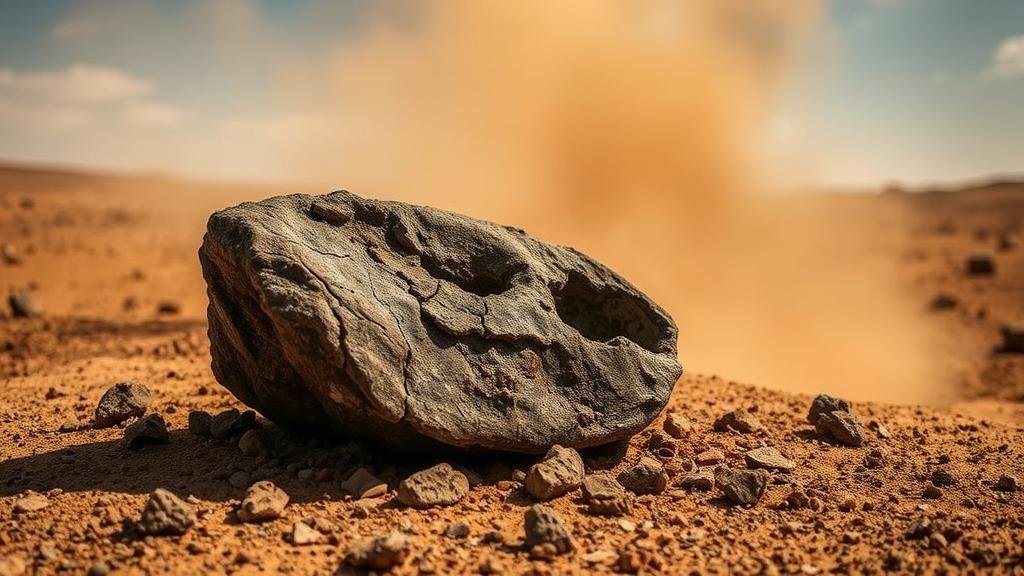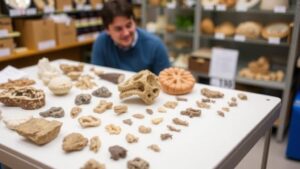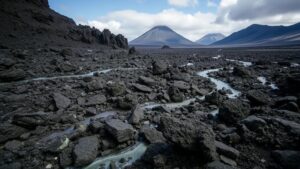Meteorite Crashes: Relics of Space Hidden in Earth’s Dusty Plains
Meteorite Crashes: Relics of Space Hidden in Earths Dusty Plains
Meteorite crashes offer a unique glimpse into the universe beyond our planet. For rockhounds and mineral collectors, these celestial remnants are not only fascinating to study but also provide valuable insights into the formation of our solar system. This article explores the significance of meteorites, how to identify them, and tips for collectors interested in hunting for these extraordinary relics.
The Importance of Meteorites
Meteorites are fragments of asteroids or comets that survive their fiery passage through Earths atmosphere. When these cosmic shards reach the ground, they become tangible evidence of extraterrestrial processes. Scientific studies of meteorites, including the analysis of isotopic compositions and mineralogy, reveal important information about the early solar systems evolution.
For example, the famous Allende meteorite, which fell in Mexico in 1969, is a carbonaceous chondrite that has provided insight into the conditions during the early solar system. Research indicates that it contains pre-solar grains, particles formed before the Sun and planets, offering clues about the chemical history of our cosmic neighborhood.
Types of Meteorites
Meteorites are classified into three primary categories based on their composition:
- Stony Meteorites: The most abundant type, comprising around 94% of all meteorite falls. e include chondrites and achondrites, rich in silicate minerals.
- Iron Meteorites: Composed mainly of iron and nickel, these meteorites are remnants from the cores of differentiated asteroids.
- Stony-Iron Meteorites: A hybrid category that contains both metallic and silicate components, often found in the wreckage of colliding bodies.
Where to Find Meteorites
Rockhounds and collectors looking for meteorites should focus on specific locations that increase their chances of discovery:
- Desert Areas: The arid landscapes of deserts like the Sahara and the Mojave exhibit minimal vegetation and soil cover, making meteorites easier to spot.
- Polar Regions: Antarctica is a prime location for meteorite hunting, as the ice preserves the meteorites and easily exposes them on the surface.
- Impact Craters: Regions around impact craters may have weathered fragments left behind after a meteorite collision.
Identifying Meteorites
Recognizing a meteorite can be a challenge, but certain characteristics can help in identification.
- Fusion Crust: A thin, shiny exterior formed by the intense heat during atmospheric entry. This crust is often black or brown.
- Magnetism: Many meteorites, particularly iron types, are magnetic due to their metallic content.
- Chondrules: Spherical mineral grains found in stony meteorites, indicative of their origin in protoplanetary disks.
Also, collectors should familiarize themselves with common non-meteorite rocks that may be confused with meteorites. For example, some terrestrial rocks, such as certain basalts or slag from industrial processes, can superficially resemble true meteorites.
Practical Tips for Collectors
For rockhounds eager to start their meteorite collection, consider the following actionable takeaways:
- Invest in Tools: Carry a good magnet, hand lens, and a field guide to help identify and authenticate your finds.
- Join a Community: Engage with local rock and mineral societies or meteorite hunting clubs to share knowledge and experiences.
- Document Your Finds: Keep a detailed log of your meteorite discoveries, including location, type, and any relevant measurements.
Aiming for credible dealers and auctions can also enhance your collectors experience. Be sure to verify the authenticity and provenance of each piece, as the meteorite market can have questionable goods.
Conclusion
Meteorite crashes are more than mere accidents; they are gateways to understanding our universe. For rockhounds and mineral collectors, pursuing these celestial relics can be an exhilarating hobby filled with discovery and education. By utilizing the insights and tips presented, collectors can enhance their chances of finding and appreciating these extraordinary pieces of cosmic history.



